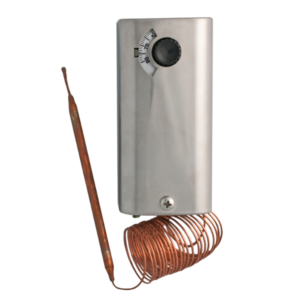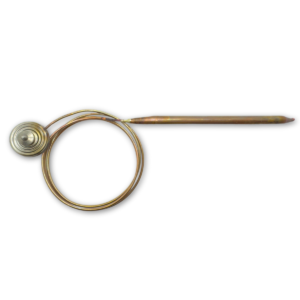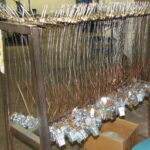Line voltage thermostat sensors control heating systems in residential, commercial, and agricultural applications. These thermostats use liquid-filled capillary tubes to monitor and regulate temperatures with precision. The capillary tube system includes a liquid-filled bulb, a flexible tube, and a diaphragm. When the bulb detects temperature changes, the liquid expands or contracts. This action creates pressure that moves the diaphragm, which activates the thermostat’s switch.
Looking for dependable components for your thermostat designs? Contact us today to learn how our liquid-filled capillary tubes can fit your application. Visit our product page for more information.
 Applications for Line Voltage Thermostat Sensors with Liquid-Filled Capillary Tubes
Applications for Line Voltage Thermostat Sensors with Liquid-Filled Capillary Tubes
Electric Heating Systems
Many electric heating systems in HVAC applications rely on line voltage thermostat sensors equipped with liquid-filled capillary tubes. These components provide precise and remote temperature control.
- Radiant Heating: The bulb can be embedded directly into heated surfaces, such as floors or ceilings, to monitor and maintain the desired temperature efficiently.
- Fan-Forced Heaters: Positioning the bulb near the heat output allows the thermostat to adjust and maintain the correct delivered temperature.
These systems operate smoothly because the liquid-filled capillary tubes respond predictably to gradual temperature changes.
Agricultural Applications
In agricultural environments, line voltage thermostat sensors with liquid-filled capillary tubes are used to monitor and control temperatures in specific areas. These thermostats help create stable conditions for various applications.
- Greenhouses: Placing the bulb in grow zones ensures that plants remain within their ideal temperature range. This helps optimize growth and prevents crop damage from temperature extremes.
- Livestock Barns: The bulb, when placed inside enclosures, regulates the temperature for animal comfort and productivity.
- Hatcheries and Incubators: Placing the bulb directly in controlled environments ensures consistent temperatures necessary for successful egg incubation and hatching.
By offering remote sensing capabilities, these thermostats ensure precise temperature management across large or sensitive spaces.
 Why Liquid-Filled Capillary Tubes Improve Line Voltage Thermostat Sensors
Why Liquid-Filled Capillary Tubes Improve Line Voltage Thermostat Sensors
Liquid-filled capillary tubes offer several advantages for thermostat sensors:
- Enable Remote Monitoring: You can install the bulb in the exact location where temperature regulation is needed, even if it is far from the thermostat housing.
- Provide Smooth Operation: Liquid-filled designs expand and contract predictably, ensuring stable and consistent temperature control.
- Ensure Long-Term Durability: The sealed design prevents wear and supports long-lasting use in high-demand environments, such as agriculture or residential heating.
- Allow Customization: Manufacturers can tailor capillary tube length, bulb size, and diaphragm sensitivity to meet specific application requirements.
These features make liquid-filled capillary tubes an excellent choice for use in line voltage thermostat sensors.
Why OEMs Should Consider Liquid-Filled Capillary Tubes
OEMs designing line voltage thermostat sensors can benefit from the reliability and flexibility of liquid-filled capillary tubes. These components allow manufacturers to:
- Deliver accurate temperature control for electric heating systems such as radiant heating and fan-forced heaters.
- Offer solutions for agricultural applications, including greenhouses, livestock barns, and hatcheries.
- Provide custom thermostat designs that meet the specific needs of customers or end users.
By integrating liquid-filled capillary tubes, OEMs can create dependable thermostat sensors for both residential and agricultural applications.


